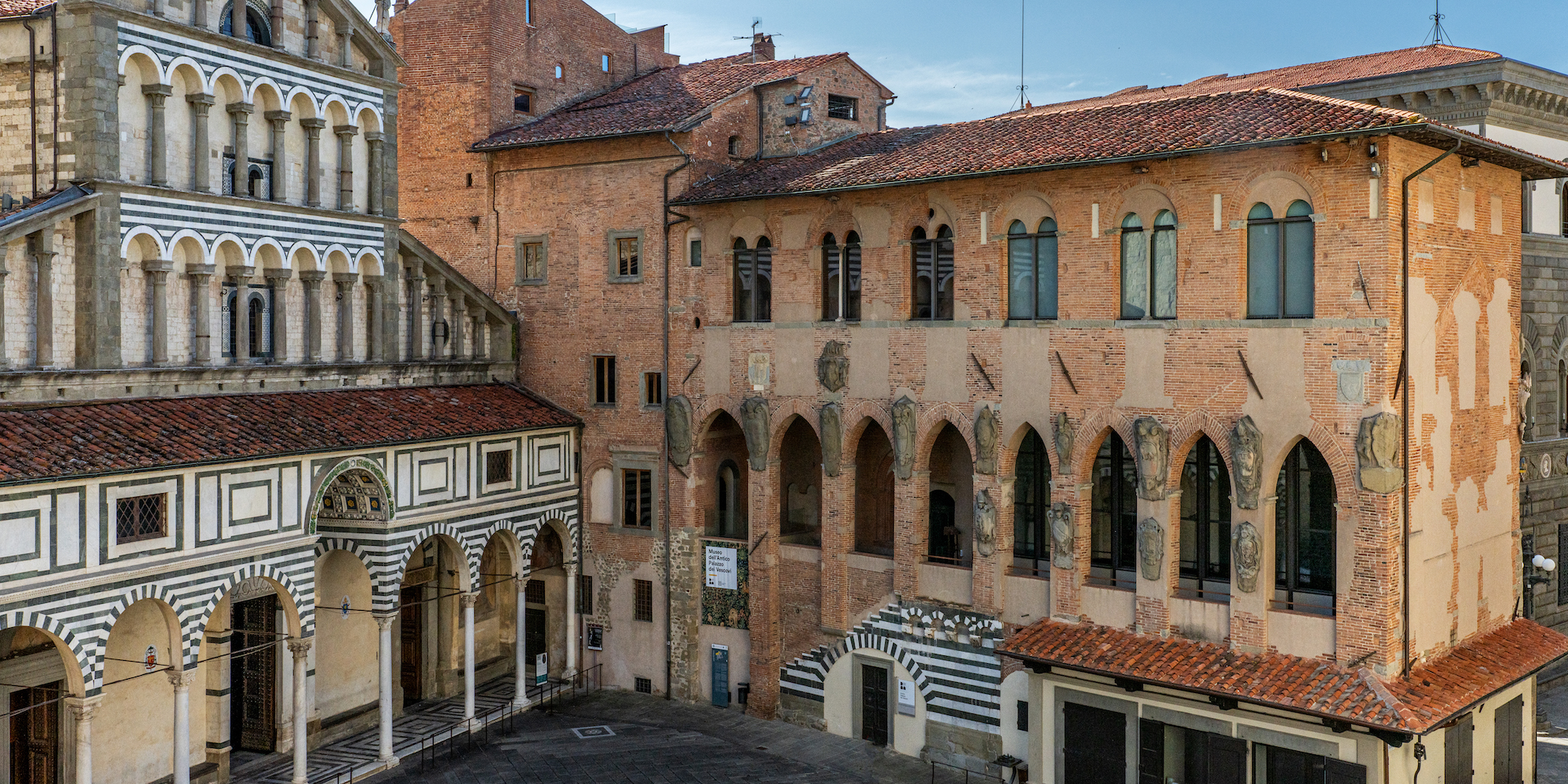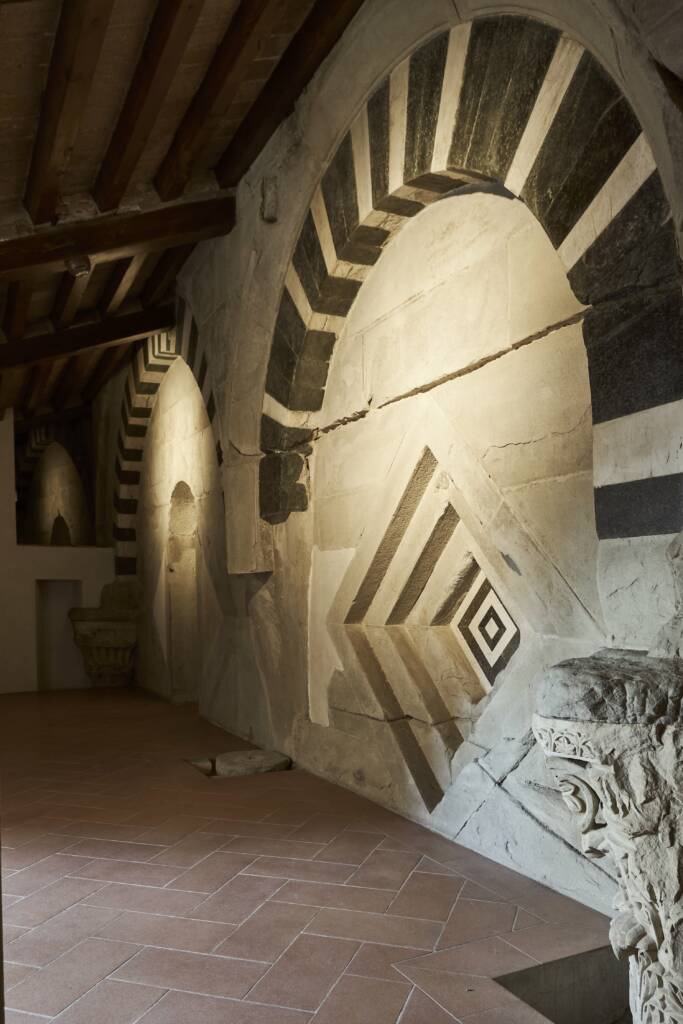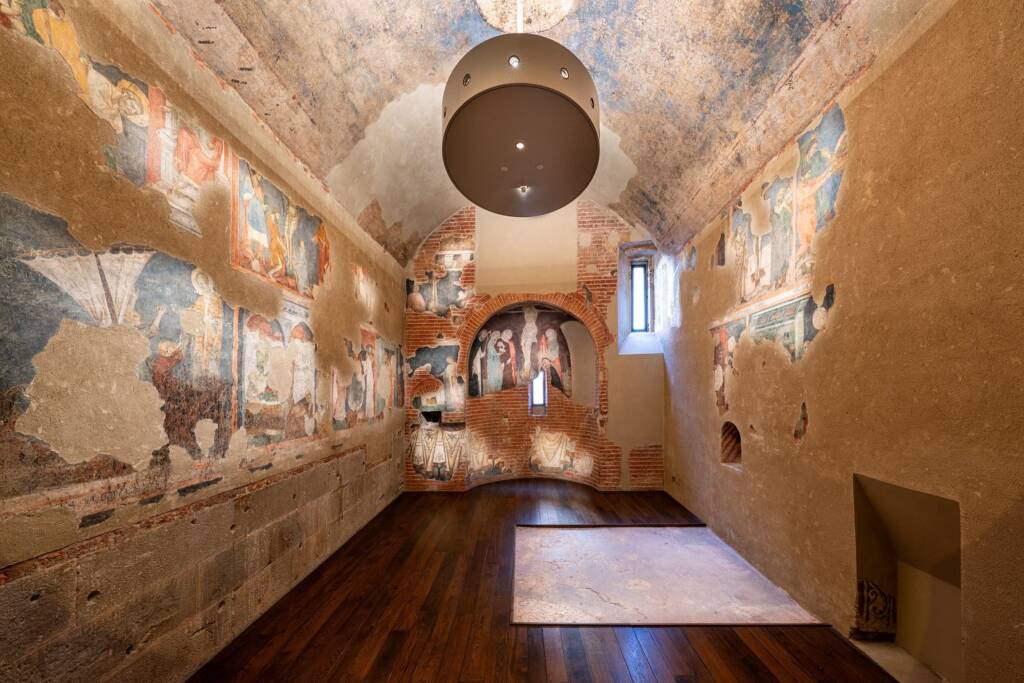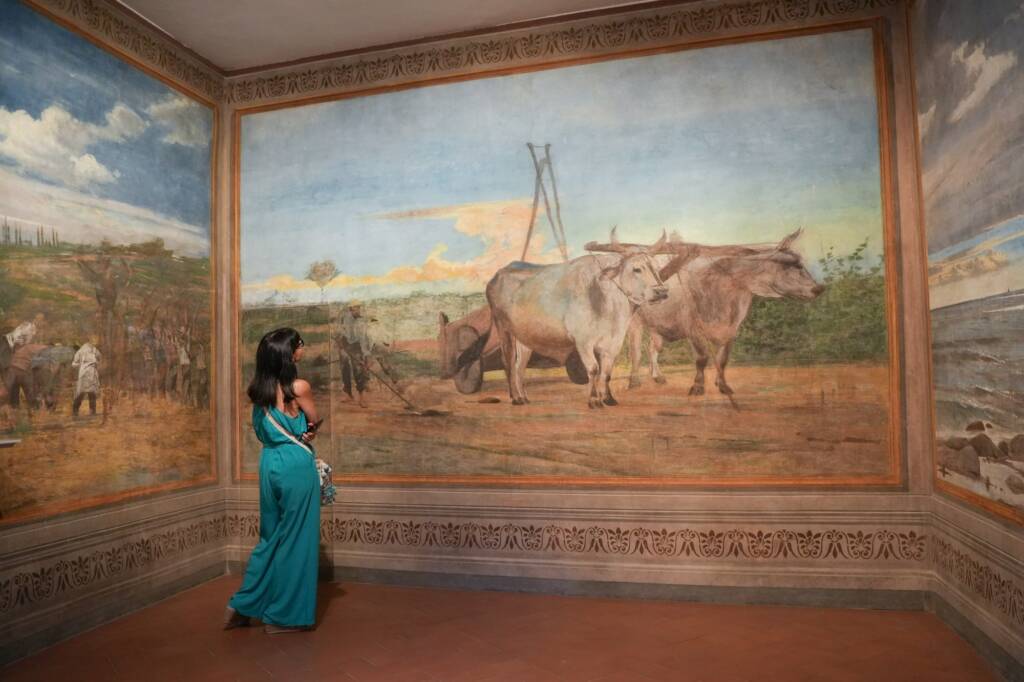Antico Palazzo dei Vescovi

Documented as far back as 1091, this medieval building is a symbol and expression of the bishop’s power in the city and of its vicissitudes. The Palazzo developed in parallel with the building of the new cathedral and the emerging institution of the Comune. It initially had the appearance of a fortified residence, before acquiring that of an aristocratic home in the 12th century.


Between 1163 and 1180, the sacristy of San Jacopo was built in the courtyard, referencing the relationship between Pistoia and Santiago de Compostela as well as the theft carried out by Vanni Fucci, mentioned in Dante’s Inferno; and above this, the bishop’s chapel dedicated to San Nicola. A large arch connected the courtyard with the Cathedral lane, emphasising the link between the bishop’s palace and the canonry and cathedral.
In the 16th century, the building took on considerable elegance, but the lack of service rooms started to become evident: the Palazzo, which had been inhabited by the city’s bishops for centuries but by then had become inadequate for changing living requirements, was sold in 1786 by Bishop Scipione de’ Ricci.
Between 1863 and 1865, the building was completely overhauled to accommodate shops and private apartments, and subsequently, in the 1880s, it housed the first Museum of the Antico Palazzo dei Vescovi.
In recent years, restoration and refurbishment work has begun, at the end of which the entire building will be used as a museum, where the present, the past and the future converge: four floors entirely devoted to narrating the history of the city and its ties with the local area, with art and culture from ancient times to the present day.




